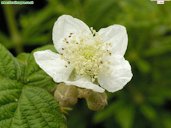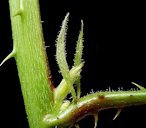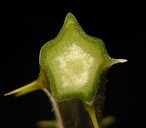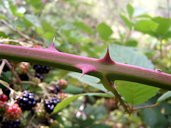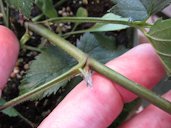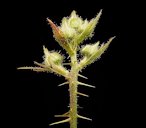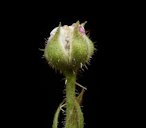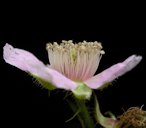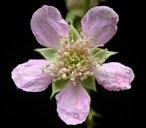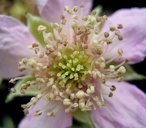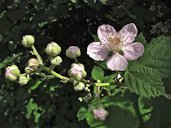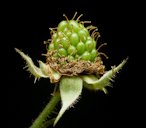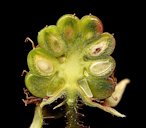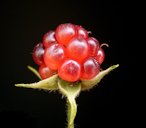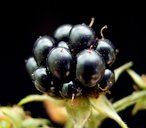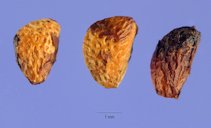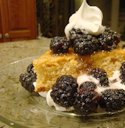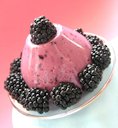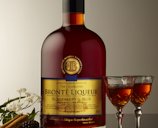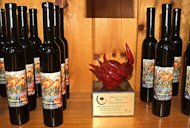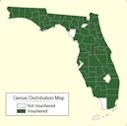| Blackberry - Rubus spp. | |||||||||||||||||||||||||||||||||||||||||||||||||||||||||||||
|---|---|---|---|---|---|---|---|---|---|---|---|---|---|---|---|---|---|---|---|---|---|---|---|---|---|---|---|---|---|---|---|---|---|---|---|---|---|---|---|---|---|---|---|---|---|---|---|---|---|---|---|---|---|---|---|---|---|---|---|---|---|
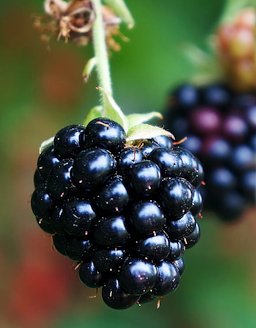 Fig. 1 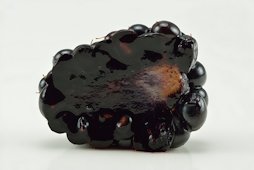 Fig. 2  Halved blackberry (R. fruticosus) Receptacle (torus) remains attached to the fruit 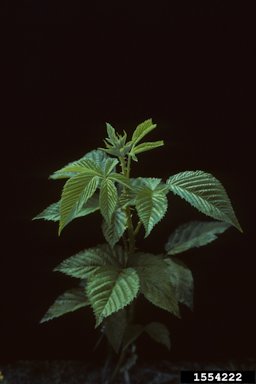 Fig. 3  Cane fruit foliage 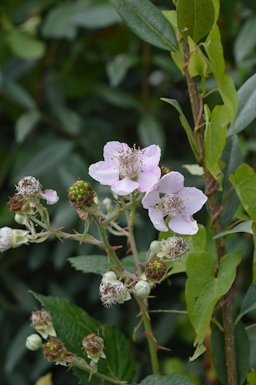 Fig. 10  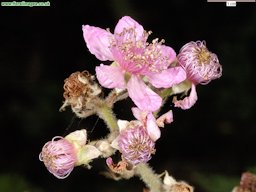 Fig. 11  Blackberry bramble, Rubus fruticosus agg. 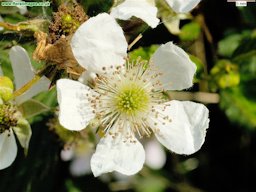 Fig. 12  Blackberry bramble, R. fruticosus agg., Catcott Nature Reserve 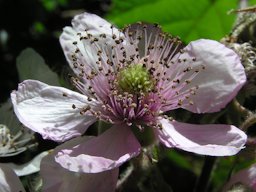 Fig. 13  Pink blackberry flower (R. fruticosus), Wellington, New Zealand 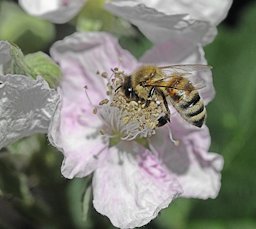 Fig. 14  Western honey bee on blackberry along the Ohlone Greenway in El Cerrito 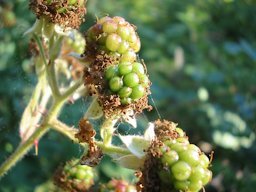 Fig. 21  Blackberries (premature) in the Coburg Hills near Harrisburg, Oregon 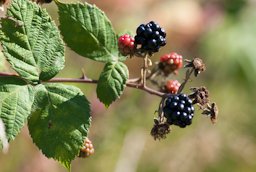 Fig. 22  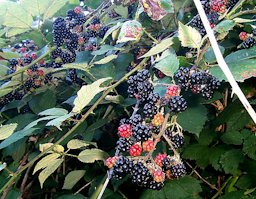 Fig. 23  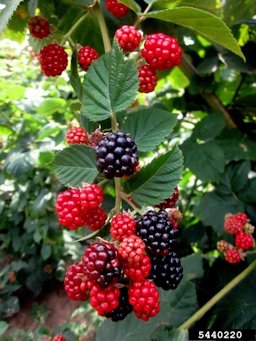 Fig. 24  European blackberry (R. fruticosus) 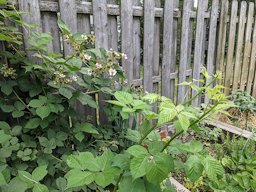 Fig. 25  Examples of primocanes and floricanes of R. fruticosus. The flowering, fruiting canes in the upper-left corner of the photo are second year floricanes. The flowerless, fruitless canes in the bottom-right of the photo are new primocane growths. 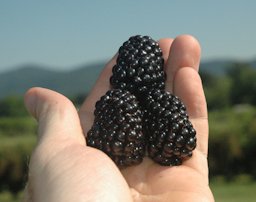 Fig. 26 ‘Prime-Ark® Freedom’ Arkansas Agricultural Experiment Station (300 required chill hours)  Fig. 27 2020 Outstanding Fruit Cultivar Award to "Ouachita" blackberries, Arkansas Agricultural Experiment Station (400–500 required chill hours) 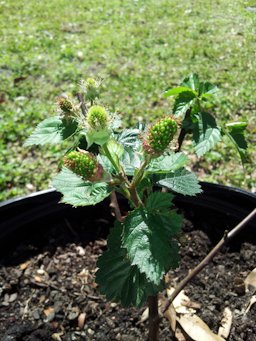 Fig. 34  Blackberries growing in Florida March 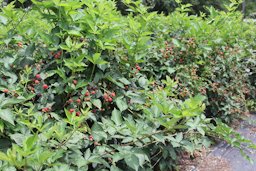 Fig. 35  Blackberries growing in the pick-your-own section of the University of Georgia, Coastal Georgia Botanical Gardens and Bamboo Farm 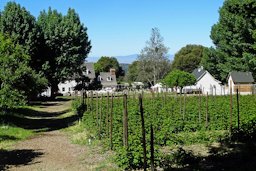 Fig. 36  Blackberry patch, Riley's Farm, Oak Glen, CA. 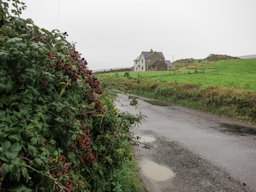 Fig. 37  October blackberries, West Cork, Ireland 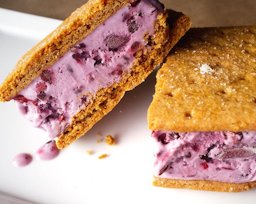 Fig. 38  Blackberry ice cream sandwiches, Alabama US 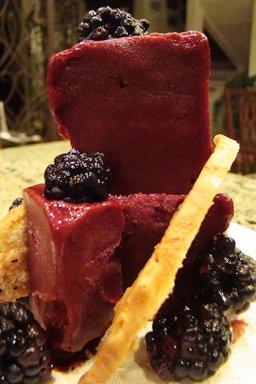 Fig. 39  Blackberry Merlot sorbet 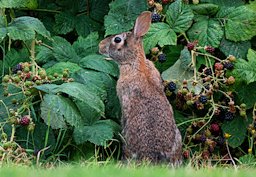 Fig. 52  Children's book bunny. Sure it is... It is a rabbit stealing my blackberries. |
Scientific
name Rubus spp. Common names English: bramble, blackberry, European blackberry, black heg, wild blackberry; Spanish: zarza, zarzamora, zarzamora comun; French: murier, murier sauvage, ronce, ronce commune; Germany: Echte Brombeere; Portuguese: amora silvestre, silva; Italy: mora di rovo, rogo, roveto, rovo 14,20 Synonyms Ametron Raf.; Ampomele Raf.; Batidaea (Dumort.) Greene; Bossekia Neck. ex Greene; Calyctenium Greene; Cardiobatus Greene; Chamaemorus Hill; Comarobatia Greene; Cumbata Raf.; Cylactis Raf.; Dyctisperma Raf.; Idaeobatus (Focke) Börner; Manteia Raf.; Melanobatus Greene; Oligacis Raf.; Oreobatus Rydb.; Parmena Greene; Psychrobatia Greene; Rubacer Rydb.; Selnorition Raf. 11 Relatives Apple, Malus domestica; capulin, Prunus salicifolia; chickasaw plum, Prunus angustiflolia; loquat, Eriobotrya japonica; mayhaw, Crataegus spp.; peach, Prunus persica; pear, Pyrus spp.; strawberry, Fragaria ananassa 10 Family Rosaceae (rose family) Origin Europe and Asia 14 USDA hardiness zones 3-9 8 Uses Fruit; medicinal; honey Height Canes are vigorous and can grow 20 ft (6 m) long in a season 5 Plant habit Blackberries can be erect, semi-erect, and trailing with gradations in between; thorn or thornless 1 Growth habit Terennial crowns; root systems with biennial canes 5 Longevity In Florida, usually remain productive for 4-7 years 1 Trunk/bark/branches Shoots with thorns, many new cultivars are thornless 1 Pruning requirement Removing dead floricanes after harvest; tipping primocanes to increase lateral branch formation Leaves Alternate; trifoliate or pinnately compound; with 3, 5, 7 or 9 deeply serrate or toothed leaflets 21 Flowers White or pink; 5 petals; born terminally in loose clusters 10 Fruit Aggregate fruit that is derived from many ovaries from a single flower 1 USDA Nutrient Content pdf Season May, June 1 Light requirement Full sun Soil tolerances Tolerate a wide range of soil types; do best on sandy loam soils with organic matter 6 pH preference 5.5-6.5 1,12 Drought tolerance Plants are drough tolerant but irrigation promotes fruit development 5 Cold tolerance Blossoms are damaged 28 °F (-2 °C) 8 Plant spacing Cultivar dependent; in general, erect cultivars 3 ft (1 m) apart, trailing cultivars 5 ft (1.5 m) apart 16 Roots Shallow root system Pest/disease resistance Several insect species attack blackberries; diseases incited by different disease organisms are a common problem 1 Invasive potential * Wild blackberry is highly invasive Known hazard Sharp thorns are present on most varieties 10 Reading Material The Blackberry, University of Florida pdf Choosing the Right Blackberry Cultivar in Subtropical Florida, University of Florida pdf Essential Guide to Rubus, The Herb Society of America pdf Rubus fruticosus, Wild blackberry, Floridata Brambles: Organic Production, ATTRA Sustainable Agriculture pdf Origin There are many species of wild Rubus growing in temperate climates in the Northern Hemisphere, and a few species found at high elevations in the tropics. The cultivated blackberries of North America have a complex pedigree that includes several American and European species in the subgenus Rubus, within the genus Rubus. Collectively, the cultivated and wild microspecies of subgenus Rubus, the "blackberries", are referred to as Rubus fruticosus. Some wild North American species are: Allegheny blackberry (Rubus allegheniensis); highbush blackberry (R. betulifolius); American dewberry (R. canadensis); sand blackberry R. cuneifolius; northern dewberry (R. flagellaris); swamp blackberry (R. hispidus); and southern dewberry (R. trivialis), all native to eastern North America. Mayes dewberry (R. almus); R. leucodermis; and R. ursinus are native to western North America. The European bramble (Rubus fruticosus) also figured in the development of modern blackberry cultivars, and, as mentioned above, lent its botanical name to the whole group. 8 European bramble, Rubus fruticosus:
Fig. 4. European blackberry (R. fruticosus) Fig. 5. Blackberry bramble, R. fruticosus agg., Mendip Hills, Somerset, Middledown Drove, UK Wild American Rubus spp. Taxonomy Blackberry taxonomy is very uncertain. In modern times, based on commercial production, the blackberries have been grouped by growth habit. The erect and semi-erect cultivars, which account for much of the fresh market industry, are largely derived from several eastern US species (i.e. Rubus allegheniensis, Rubus argutus, Rubus frondosus). The trailing cultivars, which account for much of the industry, are largely derived from the western dew berry (Rubus ursinus) but have several other species in their background. 5 Description Several blackberry species are native to Florida, and are often picked wild, but they're usually small and flavor varies. 3 The culture of improved blackberries in Florida is primarily limited to homeowner production. The major blackberry production areas in the United States are the Pacific Northwest, Michigan, and Arkansas. 1 The blackberry cultivars from the University of Arkansas breeding, program when grown in Florida, are only adapted to the northern part of the state. 1 Blackberries, like most deciduous fruit crops, require winter chilling to achieve uniform budbreak and normal fruit development the following spring. 1 The main challenges include insufficient chill hours and poor fruit quality associated with the subtropical climate. 4 Growth Habit The crowns and root systems of blackberries live for many years. New canes arise from the crown each year and live for only two years. 6 They are perennial plants, but individual canes (stems) are biennial. This means vegetative growth happens each year, but fruit is only produced on the previous year’s vegetative growth. Thus, it is usually the two-year-old canes that produce fruit for most blackberry varieties. 7 Blackberry canes are vigorous and can grow more than 20 ft (6 m) long in a growing season. 5 Primocanes: First year shoot emerge during April in Florida. Dense, green foliage covers these vigorous shoots, which develop flower buds late in the spring season. They produce fruit the second year (Fig. 25). 7 Floricanes: Second year of the primocane; their woodier, darker canes have flowered in the spring and set fruit during mid-summer, dying back after harvest (Fig. 25). 7 Primocanes-fruiting: Have the ability to bear fruit in the fall on primocanes that emerged that spring. These canes can then fruit again the following season, during the time when floricanes would typically bear fruit. 13 Note: The introduction of primocane-fruiting (PF) blackberries by the University of Arkansas is considered a major innovation in the blackberry industry. Anytime a variety or new way of growing a crop can extend the production and marketing season, the crop becomes more important for growers and consumers. 18 This primocane-fruiting variety of blackberry does not require overwintering to produce flowers. Instead, it has an internal calendar based on the blackberry cane’s age, which tells it when to flower and fruit. 19 Growing Primocane-Fruiting Blackberries in Florida, Specialty Crop Grower Primocane-fruiting Blackberries: Potential for Extending Harvest Season and Production Regions, HortScience pdf Leaves/Stems The leaves are pinnately or palmately compound with three to five leaflets. The leaf colour is typically dark green. 5
Fig. 6. R. fruticosus stipules Fig. 7. R. fruticosus, Stem cross section Fig. 8. Blackberry stem with thorns Fig. 9. Thornless Natchez cultivar, Home Depot Kahului, Maui, Hawai'i Flowers Most cultivated blackberries produce between five and 15 flowers per lateral, although some species may have dozens of small flowers on each lateral. The showy, white to pink petals surround a ring of stamens, which in turn surround a receptacle covered with pistils arranged in whorls. 5 Flowering usually takes place in mid-spring and the fruit ripen 40–70 days later depending on the cultivar and the environment. 5
Fig. 20. Blossoming blackberry branch Rubus in the Augustusburg Castle Park in Brühl Rhineland Pollination Most erect blackberries (including all the Native American–named Arkansas blackberries) are self-fruitful and do not require a pollenizer. 1 To obtain a large, well-formed berry, most of the individual pistils in an inflorescence must be pollinated. Drupelets only form around fertilized ovules. Thus, berry size for a given cultivar is dependent on the number of seeds. Inadequate pollination results in smaller or imperfect fruit because not all seeds and drupelets are formed. 1 Blackberry flowers produce nectar and pollen that attract bees, which serve as pollinators. 1 Fruit The blackberry is an aggregate fruit and is not a true berry. It consists of as many as 80 druplets, each containing a tiny stone. The main characteristic that distinguishes the blackberry from the raspberry is the persistence of the fruit core or receptacle. In the blackberry, the receptacle remains attached to the fruit at harvest and is consumed with the fruit (Fig. 2). In the raspberry, the drupes are pulled free of the receptacle. 10 If pollination and fertilization are successful, a drupelet is produced by each ovule. Collectively the drupelets form the edible fruit, which is called an aggregate fruit. 5
Varieties Although blackberry plants can thrive in Florida's climate, inadequate chill hours cause poor and erratic bud break, limiting the productivity of many cultivars. Choosing low-chill commercial cultivars is critical for successful subtropical blackberry production. 4 For medium- to large-scale commercial production, 'Prime-Ark® Freedom'(300 hrs) is recommended because of high yields, earliness, large fruit size, and good fruit quality. Early May and mid-June. For U-pick operations, 'Ouachita'(mid-May and late June - 400-500 hrs) or 'Osage'(mid-May and mid-June - 400-500 hrs) are good options that have superior fruit quality with moderate yields and medium-size fruits. 4 ‘Prime-Ark® Freedom’ Primocane-fruiting Thornless Blackberry, HortScience pdf ‘Ouachita’ Thornless Blackberry, HortScience pdf ‘Osage’ Thornless Blackberry, HortScience pdf Blackberry Possibilities in the Southeast, Specialty Crop Grower Trialing and Developing Blackberries for Florida, Specialty Crop Grower The Performance of Blackberry Cultivars in North Florida, Proc. Fla. State Hort. Soc. pdf Harvesting Harvest usually begins about 60 to 90 days after bloom, and the crop may be picked at least twice weekly during the peak of the season. Pick the fruit in the morning when fully ripe (color appears dull) and handle carefully to avoid crushing. 9 Harvest seasons are cultivar and location dependent. The harvest season of most cultivars lasts about three to four weeks. 1 Harvest season for each blackberry cultivar lasts about 3 to 4 weeks. To extend your season, plant cultivars with various ripening dates. 16 Propagation For erect varieties, leafy stem cuttings is the most feasible method to propagate large quantities of plants. All blackberries can be propagated by root cuttings. This is the fastest method to produce new plants. The easiest and most rapid method to propagate blackberry is to utilize the suckers that naturally form from roots. Genetically thorny blackberry cultivars will remain thorny, and genetically thornless blackberry cultivars will remain thornless whether propagated from stem cuttings, root cuttings, or suckers. 1 Semi-erect or trailing blackberries can be propagated by tip layering. Tip layering sometimes occurs in nature and is a viable method for the homeowner to propagate relatively few plants. 1 Planting Do not plant blackberries in ground recently cropped to potatoes, tomatoes, peppers, or eggplants due to potential for infection from soil-borne wilt pathogens, or where peach, apple, grape, or other bramble plantings recently stood because of the potential for crown gall infection. 9 Planting-site considerations depend on your growing region. In the eastern United States, the planting site should be higher than the surrounding area to allow for air and water drainage, moving humid air and excess moisture away from the planting. This will reduce disease pressure and decrease the likelihood of winter injury and spring frost damage. 13 Planting is best performed from December through February. 1 In coastal California, it is common practice to grow brambles in high tunnels to protect the plants from wind and sun damage. 13 Pruning Three pruning events (i.e., early summer, late summer, and winter pruning) are recommended for floricane blackberry production in Florida. 7 Blackberry roots are perennial but the canes are biennial. This means that second-year canes that have produced their fruit need to be trimmed away after harvesting. 2 All primocanes that are 4–5 feet in height should be tipped so laterals can be easily trained on the top wire of the trellis system. 7 Floricane pruning in Florida is recommended for late summer following harvest, to promote better growth and development of primocanes (and associated fruiting) in the following year. 7 For an established shrub, new canes (primocanes) that haven't yet fruited should be tip-pruned to about 3 feet in early summer. This will cause the new canes to branch out, maximizing the fruit produced. 2 Winter pruning: Dead, small, or weak branches without laterals, as well as branches growing in the wrong direction or crossing, should be removed during winter pruning to leave 4–5 healthy and uniform primocanes. Lateral branches (primocanes) produced after tipping should also be pruned to 14–16 inches in length. Afterward, the branches should be attached to the wires on the trellis system with tie tape. 7 After the last harvest, cut off the old fruiting canes, remove the pruned material from the garden and destroy it. 15 Floricane Blackberry Pruning Guide for Florida, University of Florida pdf Trellising Although some cultivars are upright in growth habit and can be grown without a trellis system, most bramble fruits benefit from the additional support. The goal of a trellis system is to keep fruit off the ground, allow for good light penetration and air circulation throughout the canopy, and assist in ease of harvest. 13 The most common trellis systems for bramble fruits include the V-trellis and T-trellis, which both provide two sets of wires at two heights to support the canes and allow for an open canopy in the middle of the row. The Shift Trellis and Rotating-Cross-Arm Trellis are new trellis systems that have been designed for floricane-fruiting blackberries to increase productivity and ease of harvest, and allow for protection from winter injury in northern climates. 13 How to Build a Blackberry Trellis System: A Complete Guide, University of Florida pdf Shift-Trellises for Better Management of Brambles, Virginia Tech, Virginia Polytechnic Institute and State University pdf Fertilizing Blackberries do not require much fertilizer in most soils in north Florida. Blackberry roots are located close to the surface, and excess fertilizer can burn leaves or even kill plants. 1 Irrigation Irrigation is a requirement for consistent blackberry production in north and north central Florida and is most critical during the establishment year. Irrigation frequency can vary from once every two days during a summer drought to not at all from November through March. 1 Pests Several pests and diseases attack the blackberry. Insects such as the strawberry weevil, the red-necked cane borer, thrips, gall midges, stink bugs, and beetles. Some of these insects are occasional pests for blackberry and do not need control. 14 Flower Thrips in Blackberries in Florida, University of Florida pdf Common Arthropod Pests in Blackberries and Pomegranates in Florida, University of Florida pdf Diseases Common diseases of blackberry are anthracnose, leaf spot, crown gall, rosette, and orange rust. 14 Food Uses Blackberries may be eaten raw or prepared in a variety of ways. They may be made into sweet sauces and preserves, mixed into fruit salad, churned into ice cream, used as garnishes, and more. Baked goods such as cakes and scones may incorporate fresh or frozen. if using frozen berries, fold them into batter while still frozen. 17 The juice is often fermented to make wines or liqueurs. The leaves are commonly used to make herbal teas. 5
Fig. 40. Blackberries and Kreme with gingered lemon scone Fig. 41. Blackberry orange popcicle Fig. 42. Blackberry-banana pancakes Fig. 44. Blackberry smoothie Fig. 45. Blackberry pie Fig. 46. Homemade blackberry jam Fig. 47. Creme de mure - what and how to Fig. 48. Brontë liqueur, blackberry and sloe Fig. 49. Blackberry mead, Rossignol's WInery, Prince Edward Island, Canada Nutrient Content Blackberries have an extremely high content of antioxidants due to compounds (anthocyanin pigments, other phenolics and ellagic acid) that give them their intense colour. 5 Added Benefit: Florida Blackberries May Become More Nutritious in the Future, Speciatly Crop Grower Medicinal Properties ** Studies now suggest that consuming fruits and vegetables with high levels of antioxidants may slow the physical and mental ageing process. 5 Specific medical studies have confirmed that blackberry fruit and their relatives can hinder the development of oesophageal and colon cancer. Traditionally, the roots, berries, leaves and stems, individually or in combination have been used to treat diarrhoea, gastrointestinal problems, rheuma- tism, haemorrhoids, colds, headaches, venereal disease, sore eyes and as a treatment to prevent miscarriages. 5 Other Uses Honey derived from blackberry flowers is reported to be light in color and high in quality. 1 The intense colour due to the anthocyanins has been used as a source of natural dyes and food colourants from ancient to modern times. 5 General Raspberries belong to the subgenus Idaeobatus, and differ from blackberries in that the fruit, when picked, separates readily from the receptacle, as opposed to blackberries in which the receptacle remains attached to the fruit and is consumed along with it. The typical red raspberry of North America and Europe is Rubus idaeus. Loganberries are hybrids between blackberries and raspberries. 8
Fig. 50. The Soviet Union 1964 CPA 3135 stamp (Wild Berries, Blackberry (R. fruticosus)
Fig. 51. Blackberry distribution map, wild populations Further Reading Commercial Blackberry Production, Oklahoma State University pdf High tunnel production guide for raspberries and blackberries, Cornell University pdf Blackberries, A Forager’s Companion, Eat the Weeds Blackberry Botanical Art List of Growers and Vendors |
||||||||||||||||||||||||||||||||||||||||||||||||||||||||||||
| Bibliography 1 Andersen, Peter C. "The Blackberry." Horticultural Sciences Dept., UF/IFAS Extension, Original pub. May 2001, Revised Apr. 2008, June 2014, May 2017, and June 2020, AskIFAS, edis.ifas.ufl.edu/publication/HS104. Accessed 13 Aug. 2023. 2 McIntosh, Jamie. "How to Grow Blackberries." The Spruce, www.thespruce.com/how-to-grow-and-care-for-blackberries-4589374. Accessed 13 Aug. 2023. 3 "Blackberries." Gardening Solutions, UF/IFAS, gardeningsolutions.ifas.ufl.edu/plants/edibles/fruits/blackberries.html. Accessed 13 Aug. 2023. 4 Agehara, Shinsuke, et al. "Choosing the Right Blackberry Cultivar in Subtropical Florida." Horticultural Sciences Dept., UF/IFAS Extension, Original pub. Dec. 2019, AskIFAS, edis.ifas.ufl.edu/publication/HS1352. Accessed 13 Aug. 2023. 5 The Encyclopedia of Fruit & Nuts. Edited by Jules Janick and Robert E. Paull, Cambridge, CABI, 2008. 6 Carroll, Becky. "Commercial Blackberry Production." Oklahoma State University, Cooperative Extension, Id: HLA-6239, Feb. 2017, Public Domain, extension.okstate.edu/fact-sheets/commercial-blackberry-production.html. Accessed 13 Aug. 2023. 7 Shahid, Muhammad A., and Ali Sarkhosh. "Floricane Blackberry Pruning Guide for Florida." Horticultural Sciences Dept., UF/IFAS Extension, Original pub. Mar. 2023, AskIFAS, edis.ifas.ufl.edu/publication/HS1458. Accessed 14 Aug. 2023. 8 Christman, Steve. "Rubus fruticosus." Floridata, no. 1079, Published 29 Apr.2008, floridata.com/plant/1079. Accessed 22 Aug. 2023. 9 Gough, Bob. "An Encyclopedia of Small Fruit." EPDP, Taylor & Francis Group, LLC Boca Raton London New York, 2008, epdf.pub/an-encyclopedia-of-small-fruit.html. Accessed 31 Aug. 2023. 10 Boning, Charles R. Florida's Best Fruiting Plants- Native and Exotic Trees, Shrubs, and Vines. Sarasota, Pineapple Press, 2006. 11 "Rubus L. synonyms." The International Plant Names Index and World Checklist of Vascular Plants 2023, POWO, (CC BY 3.0), powo.science.kew.org/taxon/urn:lsid:ipni.org:names:30000199-2. Accessed 1 Sept. 2023. 12 Liburd, Oscar E., et al. "Flower Thrips in Blackberries in Florida." Entomology and Nematology Dept., UF/IFAS Extension, ENY-881, Original pub. Oct. 2014, Revised July 2021, AskIFAS, edis.ifas.ufl.edu/publication/IN1060. Accessed 3 Sept. 2023. 13 Kuepper, George L., et al. "Brambles: Organic Production." ATTRA Sustainable Agriculture, Published Jan. 2003, Updated Mar. 2017, NCAT, attra.ncat.org/publication/brambles-organic-production/. Accessed 3 Sept. 2023. 14 Rezazadeh, Air. "Growing Blackberry in South Florida." UF/IFAS Extension, St. Lucie County, 27 May 2022, AskIFAS, blogs.ifas.ufl.edu/stlucieco/2022/05/27/growing-blackberry-in-south-florida/. Accessed 18 Sept. 2023. 15 Shahid,Muhammad. "Blackberry Pruning Tips for Optimal Plant Growth and Yield." UF/IFAS Extension, 9 June 2023, AskIFAS, nwdistrict.ifas.ufl.edu/phag/2023/06/09/blackberry-pruning-tips-for-optimal-plant-growth-and-yield/. Accessed 18 Sept. 2023. 16 Freeman, Terra. "Blackberry Production." UF/IFAS Extension, St. Johns County, 8 Feb. 2018, AskIFAS, blogs.ifas.ufl.edu/stjohnsco/2018/02/08/blackberry-production/. Accessed 18 Sept. 2023. 17 "Cookbook: Blackberry." Wikibooks, en.wikibooks.org/wiki/Cookbook:Blackberry. Accessed 18 Sept. 2023. 18 Takeda, Fumiomi. "Growing Primocane-Fruiting Blackberries in Florida." Specialty Crop Indudtry, 29 Sept. 2021, specialtycropindustry.com/florida-blackberries/. Accessed 20 Sept. 2023. 19 Schreckengost,Jaci. "Blackberry Possibilities in the Southeast." Specialty Crop Indudtry, 12 Dec. 2017, specialtycropindustry.com/blackberry-possibilities-southeast/. Accessed 20 Sept. 2023. 20 "Rubus fruticosus L." CABI, Invasive Species Compendium, Wallingford, UK, CAB International, 22 Nov. 2019, www.cabidigitallibrary.org/doi/10.1079/cabicompendium.47995. Accessed 21 Sept. 2023. 21 "Blackberries, Rubus spp." Gardening Solutions, UF/IFAS, Plant Florida Identification, 18 june 2009, AskIFAS, gardeningsolutions.ifas.ufl.edu/mastergardener/outreach/plant_id/fruits_nuts/blackberry.shtml. Accessed 21 Sept. 2023. Photographs Fig. 1 "Blackberry." Hippopx, Public Domain, Image cropped, www.hippopx.com/en/blackberry-berry-fruits-black-nature-fruit-vitamins-416872. Accessed 31 Aug. 2023. Fig. 2 Leidus, Ivar. "Halved blackberry (Rubus fruticosus)." Wikimedia Commons, 2 Dec. 2020, (CC BY-SA 4.0), commons.wikimedia.org/wiki/File:Halved_blackberry_(Rubus_fruticosus).jpg. Accessed 17 Sept. 2023. Fig. 3 "Cane fruit (blackberry, raspberry) (Genus Rubus) L. foliage." The Ohio State University Weed Lab Image Archive, no. 1554222, 8 Jan. 2008, (CC BY-NC 3.0 US), Bugwood.org, www.forestryimages.org/browse/detail.cfm?imgnum=1554222. Accessed 22 Sept. 2023. Fig. 4 Vidéki, Deena Sharon. "European blackberry (Rubus fruticosus)." Forestry Images, Doronicum Kft., no. 5396182, 9 June 2009, (CC BY-NC 3.0 US), Bugwood.org, www.forestryimages.org/browse/detail.cfm?imgnum=5396182. Accessed 31 Aug. 2023. Fig. 5,11,12 Crellin, J. R. "Blackberry Bramble, Rubus fruticosus agg. Mendip Hills, Somerset, Middledown Drove, UK." Flora Images, UK, 2 Oct. 2008, (CC BY-NC-ND 3.0), www.floralimages.co.uk/page.php?taxon=rubus_fruticosus_agg,1. Accessed 31 Aug. 2023. Fig. 6 Vincentz, Frank. "Rubus fruticosus, Stipules." Wikimedia Commons, 27 June 2007, GFDL, (CC BY-SA 3.0), commons.wikimedia.org/wiki/File:Rubus_fruticosus_01_ies.jpg. Accessed 19 Sept. 2023. Fig. 7 Vincentz, Frank. "Rubus fruticosus, Stem cross section." Wikimedia Commons, 21 July 2007, GFDL, (CC BY-SA 3.0), commons.wikimedia.org/wiki/File:Rubus_fruticosus_18_ies.jpg. Accessed 19 Sept. 2023. Fig. 8 User:Kasuga. "Spines on blackberry." Wikimedia Commons, via English Wikipedia, 18 may 2006 , GFDL, (CC BY-SA 3.0), commons.wikimedia.org/wiki/File:Spines_on_blackberry.jpg. Accessed 20 Sept. 2023. Fig. 9 Starr, Forest, and Kim. "Rubus sp. (Rubus), Natchez cultivar leaves, Home Depot Kahului, Maui, Hawai'i." Starr Environmental, 170208-6833, 8 Feb. 2017, (CC BY 4.0), www.starrenvironmental.com/images/image/?q=33340113776. Accessed 21 Sept. 2023. Fig. 10 "Blackberry." Hippopx, Public Domain, www.hippopx.com/en/wild-blackberry-nature-plant-edible-fruits-of-the-forest-blackberries-258461. Accessed 31 Aug. 2023. Fig. 13 Wills, Rony. "Pink blackberry flower ('Rubus fruticosus'), Wellington, New Zealand." Wikimedia Commons, 1 Jan 2008, (CC BY 2.5), commons.wikimedia.org/wiki/File:Blackberry_flower_02.jpg. Accessed 17 Sept. 2023. Fig. 14 Gehling, TJ."Western honey bee on blackberry along the Ohlone Greenway in El Cerrito." Flickr, 3 May 2020, (CC BY-NC-ND 2.0), Image cropped, www.flickr.com/photos/tjgehling/49848322156/. Accessed 17 Sept. 2023. Fig. 15 Vincentz, Frank. "Rubus fruticosus." Wikimedia Commons, 2 Aug. 2007, GFDL, (CC BY-SA 3.0), commons.wikimedia.org/wiki/File:Rubus_fruticosus_12_ies.jpg. Accessed 19 Sept. 2023. Fig. 16 Vincentz, Frank. "Rubus fruticosus." Wikimedia Commons, 27 June 2007, GFDL, (CC BY-SA 3.0), commons.wikimedia.org/wiki/File:Rubus_fruticosus_08_ies.jpg. Accessed 19 Sept. 2023. Fig. 17 Vincentz, Frank. "Rubus fruticosus." Wikimedia Commons, 27 June 2007, GFDL, (CC BY-SA 3.0), commons.wikimedia.org/wiki/File:Rubus_fruticosus_05_ies.jpg. Accessed 19 Sept. 2023. Fig. 18 Vincentz, Frank. "Rubus fruticosus." Wikimedia Commons, 27 June 2007, GFDL, (CC BY-SA 3.0), commons.wikimedia.org/wiki/File:Rubus_fruticosus_06_ies.jpg. Accessed 19 Sept. 2023. Fig. 19 Vincentz, Frank. "Rubus fruticosus." Wikimedia Commons, 27 June 2007, GFDL, (CC BY-SA 3.0), commons.wikimedia.org/wiki/File:Rubus_fruticosus_04_ies.jpg. Accessed 19 Sept. 2023. Fig. 20 Wittwer, Michael. "Aufblühender Brombeerzweig (Rubus) im Schlosspark Augustusburg in Brühl (Rheinland)." Wikimedia Commons, 16 June 2021, (CC BY-SA 4.0), commons.wikimedia.org/wiki/FFile:Aufblühender_Brombeerzweig.jpg. Accessed 20 Sept. 2023. Fig. 21 Gayles, Elias."Blackberries (Premature) in the Coburg Hills near Harrisburg, Oregon." Flickr, 29 Oct. 2006, (CC BY 2.0), www.flickr.com/photos/58853173@N00/281981072. Accessed 22 Aug. 2023. Fig. 22 Quine, Thomas."Blackberries." Flickr, 25 Oct. 2014, (CC BY 2.0), www.flickr.com/photos/91994044@N00/15000478494. Accessed 22 Aug. 2023. Fig. 23 "Blackberry fruit." Wikimedia Commons, 26 Apr. 2005, GFDL, (CC BY-SA 3.0), commons.wikimedia.org/wiki/File:Blackberry_fruits15.jpg. Accessed 19 Sept. 2023. Fig. 24 Chadi, Deena Sharon. "European blackberry (Rubus fruticosus)." Forestry Images, no. 544022025, 25 July 2011, (CC BY-NC 3.0 US), Bugwood.org, www.forestryimages.org/browse/detail.cfm?imgnum=5440220. Accessed 31 Aug. 2023. Fig. 25 Ryu, Izawa. "Examples of primocanes and floricanes of Rubus fruticosus. The flowering, fruiting canes in the upper-left corner of the photo are second year floricanes. The flowerless, fruitless canes in the bottom-right of the photo are new primocane growths." Wikimedia Commons, 21 June 2021, (CC BY-SA 4.0), commons.wikimedia.org/wiki/File:PRubus_primocanes_and_floricanes.jpg. Accessed 19 Sept. 2023. Fig. 26 Miller, Fred. "‘Prime-Ark® Freedom’." Arkansas Agricultural Experiment Station, Arkansas Blackberries, University of Arkansas System Division of Agriculture, Fruit Breeding Program, 29 Jan. 2021, Flickr, (CC BY 2.0), Image cropped, www.flickr.com/photos/89175420@N02/46196829574/in/album-72157678726145063/. Accessed 14 Aug. 2023. Fig. 27 Miller, Fred. "2020 Outstanding Fruit Cultivar Award to Ouachita blackberries." Arkansas Agricultural Experiment Station, Arkansas Blackberries, University of Arkansas System Division of Agriculture, Fruit Breeding Program, 29 Jan. 2021, Flickr, (CC BY 2.0), www.flickr.com/photos/89175420@N02/50163984537. Accessed 14 Aug. 2023. Fig. 28 Vincentz, Frank. "Rubus fruticosus." Wikimedia Commons, 27 June 2007, GFDL, (CC BY-SA 3.0), commons.wikimedia.org/wiki/File:Rubus_fruticosus_02_ies.jpg. Accessed 19 Sept. 2023. Fig. 29 Vincentz, Frank. "Rubus fruticosus." Wikimedia Commons, 27 June 2007, GFDL, (CC BY-SA 3.0), commons.wikimedia.org/wiki/File:Rubus_fruticosus_17_ies.jpg. Accessed 19 Sept. 2023. Fig. 30 Vincentz, Frank. "Rubus fruticosus." Wikimedia Commons, 27 June 2007, GFDL, (CC BY-SA 3.0), commons.wikimedia.org/wiki/File:Rubus_fruticosus_11_ies.jpg. Accessed 19 Sept. 2023. Fig. 31 Vincentz, Frank. "Rubus fruticosus." Wikimedia Commons, 14 July 2007, GFDL, (CC BY-SA 3.0), commons.wikimedia.org/wiki/File:Rubus_fruticosus_10_ies.jpg. Accessed 19 Sept. 2023. Fig. 32 Hill, Andrew. "Blackberries." Flickr, 17 Aug. 2014, (CC BY-ND 2.0), www.flickr.com/photos/47042618@N06/14759976720/. Accessed 21 Sept. 2023. Fig. 33 Hurst, Steve. "Seeds of Rubus fruticosus." USDA-NRCS PLANTS Database, Wikimedia Commons, Public Domain, commons.wikimedia.org/wiki/File:Rubus_fruticosus_seeds.jpg. Accessed 19 Sept. 2023. Fig. 34 Timothy, Kevin. "Blackberries growing in a Florida March." Flickr, 1 Mar. 2014,(CC BY 2.0), www.flickr.com/photos/crabbylioncardsandmore/12860585065/. Accessed 17 Sept. 2023. Fig. 35 Dowdy, Sharon. "Blackberries growing in the pick-your-own section of the University of Georgia, Coastal Georgia Botanical Gardens and Bamboo Farm." UGA CAES/Extension, 18 June 2018, Flickr, (CC BY-NC 2.0), www.flickr.com/photos/ugacommunications/42880066971/. Accessed 21 Sept. 2023. Fig. 36 Graham, Don."Blackberry Patch, Riley's Farm, Oak Glen, CA." Flickr, 22 May 2017, (CC BY-SA 2.0), www.flickr.com/photos/23155134@N06/34662559102. Accessed 17 Sept. 2023. Fig. 37 Goodman, Neville. "October blackberries, West Cork, Ireland." Wikimedia Commons, 3 Oct. 2014, (CC BY-SA 2.0), commons.wikimedia.org/wiki/File:October_blackberries_-_geograph.org.uk_-_4192968.jpg. Accessed 19 Sept. 2023. Fig. 38 Daily, Ralph. "Blackberry Ice Cream Sandwiches, at Dyron's Lowcountry, Alabama US." Flickr, 30 May 2012, (CC BY 2.0), www.flickr.com/photos/92269745@N00/7304587152. Accessed 22 Aug. 2023. Fig. 39 Hudson, Janet. "Blackberry Merlot Sorbet." Vegan Feast Catering, 14 Apr. 2009, (CC BY 2.0), Flickr, www.flickr.com/photos/veganfeast/3440810526/. Accessed 22 Aug. 2023. Fig. 40 Hudson, Janet. "Blackberries & Kreme with Gingered Lemon Scone." Vegan Feast Catering, 2 Aug. 2009, (CC BY 2.0), Flickr, www.flickr.com/photos/veganfeast/3784215234/. Accessed 22 Aug. 2023. Fig. 41 Angell, Nate."Blackberry Orange Popcicle." Flickr, 8 Sept. 2012, (CC BY 2.0), Image cropped, www.flickr.com/photos/25882844@N00/7956516414. Accessed 22 Aug. 2023. Fig. 42 Nguyen, Nam. "Blackberry-Banana Pancakes." The Culinary Chronicles, 24 Mar. 2015, (CC BY-ND 3.0 US), theculinarychronicles.com/2015/03/24/blackberry-banana-pancakes/Accessed 22 Aug. 2023. Fig. 43 "Blackberry." Hippopx, Public Domain, www.hippopx.com/en/szederkrem-blackberry-pudding-dessert-fruit-fruity-dessert-cream-165962. Accessed 31 Aug. 2023. Fig. 44 "Blackberry." Hippopx, Public Domain, www.hippopx.com/en/smoothie-cocktail-fruit-blackberries-fit-mature-vitamin-10665. Accessed 31 Aug. 2023. Fig. 45 "Blackberry." Hippopx, Public Domain, www.hippopx.com/en/cake-sweet-dessert-food-suites-france-confectionery-fruit-135489. Accessed 31 Aug. 2023. Fig. 46 Wapster."Homemade Blackberry Jam." Flickr, 27 Sept. 2008, (CC BY 2.0), www.flickr.com/photos/wapster/2891921795/. Accessed 17 Sept. 2023. Fig. 47 "Creme de Mure - what and how to." Gintossen Blog, (CC BY-NC 4.0), www.gintossen.dk/en/blog/creme-de-mure-what-and-how-to.html. Accessed 17 Sept. 2023. Fig. 48 "Brontë Liqueur." Bronte Blog, 17 July 2014, (CC BY-NC-ND 3.0), bronteblog.blogspot.com/2014/07/bronte-liqueur.html. Accessed 17 Sept. 2023. Fig. 49 Dunn, Ross. "Blackberry Mead, Rossignol's WInery, Prince Edward Island, Canada." Wikimedia Commons, 14 Oct. 2015, (CC BY-SA 2.0), commons.wikimedia.org/wiki/File:Blackberry_Mead_(22369575496).jpg. Accessed 20 Sept. 2023. Fig. 50 User Matsievsky. "The Soviet Union 1964 CPA 3135 stamp (Wild Berries. Blackberry (Rubus fruticosus)." Wikimedia Commons, 25 Dec. 1964, Public Domain, commons.wikimedia.org/wiki/File:The_Soviet_Union_1964_CPA_3135_stamp_(Wild_Berries._Blackberry_(Rubus_fruticosus)).jpg. Accessed 19 Sept. 2023. Fig. 51 Wunderlin, R. P., et al. "Rubus." Institute for Systematic Botany, University of South Florida, Tampa, S. M. Landry, and K. N. Campbell (application development), USF Water Institute, 2023, Atlas of Florida Plants, florida.plantatlas.usf.edu/Plant.aspx?id=1063. Accessed 24 Aug. 2023. Fig. 52 marneejill. "Children's book bunny. Sure it is. It is a rabbit stealing my blackberries." Flickr, 9 Aug. 2020, (CC BY-SA 2.0), www.flickr.com/photos/rosiejuliet/50203993458/. Accessed 21 Sept. 2023. * UF/IFAS Assessment of Non-native Plants in Florida's Natural Areas ** Information provided is not intended to be used as a guide for treatment of medical conditions. Published 23 Feb. 2024 LR. Last Update 4 July 2024 LR |
|||||||||||||||||||||||||||||||||||||||||||||||||||||||||||||

